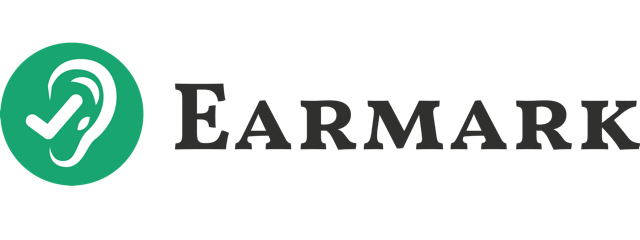Intuit recently held its annual stockholders meeting. Even if you spend your day working hands-on in QuickBooks, it’s important to understand the bigger picture behind this publicly traded company.
In a recent episode of “The Unofficial QuickBooks Accountants Podcast,” hosts Alicia Katz Pollock and Matthew “Spot” Fulton analyzed the meeting and shared insights that can help accounting professionals plan for changes coming to the QuickBooks ecosystem.
Why This Meeting Matters
Intuit’s fiscal year ends on July 31, which means their annual meeting doesn’t line up with the usual calendar year or fiscal year. At each meeting, Intuit’s CEO, Sasan Goodarzi, and other leaders present the company’s strategy and financial results. Matthew explains he listens to these meetings because it reveals how Intuit’s plans match what accountants are seeing on the ground.
An AI-Focused Vision
Intuit decided in 2018 to become an “AI-driven expert platform.” Goodarzi calls AI the greatest technology shift since electricity and the internet. Whether you agree or not, Intuit is already seeing major results:
- 8x faster development velocity (roughly 30% quicker feature delivery)
- 11% fewer direct customer support calls thanks to AI-powered self-service
Intuit also applies AI inside its own operations. Matthew describes it as an “eat your own dog food” strategy: They’re not just releasing AI tools for customers; they’re using the same tools internally to reduce workload and speed up development. For accountants, this means QuickBooks may change more quickly, making it vital to stay informed about new features.
Five Big Bets for Growth
During the meeting, Intuit repeated its “five big bets” for driving innovation:
- Revolutionize speed to benefit
- Connect people to experts
- Unlock smart money decisions
- Be the center of small business growth
- Disrupt the mid-market
The “connect people to experts” bet includes both Intuit’s own experts and independent accounting professionals. While some accountants worry about QuickBooks Live as competition, Alicia points out that the QuickBooks Live Expert Assist model can allow ProAdvisors to focus on higher-level services while routine questions go elsewhere. In many cases, accountants can also sign clients up for QuickBooks Live and share revenue.
Expanding the Ecosystem: Mailchimp and Credit Karma
Intuit’s acquisitions of Mailchimp and Credit Karma once puzzled some users. Now, the strategy is clear: create a complete platform. A business might start small in QuickBooks, then grow and need Mailchimp for marketing, or use Credit Karma to secure funding. Intuit reported:
- 22% more customers using both Mailchimp and QuickBooks Online
- 5x increase in Credit Karma users who finish taxes in TurboTax
This cross-platform synergy is part of Intuit’s plan to keep business owners on their products for every financial need. Meanwhile, the company continues to see massive usage overall:
- $2 trillion in invoices managed across the platform
- $124 billion in total payment volume
- $10.4 trillion in consumer debt visibility via Credit Karma
QuickBooks Online Growth and Payroll
QuickBooks Online’s U.S. customer base grew by 11%, and QuickBooks Online Advanced saw a 28% rise in subscriptions with an 84% retention rate. QuickBooks Online Payroll revenue climbed by 23%, with 18 million workers paid through Intuit’s payroll systems each year.
These numbers highlight Intuit’s growing influence. Matthew believes the trifecta of QuickBooks Online Advanced, QuickBooks Time, and QuickBooks Payroll offers more advanced project tracking, streamlined payroll, and faster reporting. Alicia adds that the new features—like revenue recognition and updated reporting—make QuickBooks Online Advanced more compelling than ever.
New Mid-Market Focus: Intuit Enterprise Suite
To “disrupt the mid-market,” Intuit introduced Intuit Enterprise Suite. They estimate the average revenue per customer (ARPC) at about $20,000 a year—or roughly $1,600 a month. While still in early phases, it could give companies that have outgrown QuickBooks Online Advanced or Enterprise more reasons to stay with Intuit. Additional API features and custom fields may arrive soon, which could benefit app developers and clients with more complex needs.
What About Mint?
A shareholder asked if Mint, Intuit’s personal finance tool, might see a refresh. Goodarzi gave a brief response suggesting no big revival is planned. This indicates Intuit remains focused on other core products, including QuickBooks, TurboTax, Mailchimp, and Credit Karma.
CEO Compensation and Long-Term Vision
About 7% of Goodarzi’s pay is salary, while 93% is in stock options. This structure links his earnings to the company’s success. Alicia sees this as a sign that Intuit’s leaders believe in their long-term strategy enough to connect most of their personal income to stock performance.
What It All Means for Accountants
Despite the rapid pace of AI and big-company acquisitions, Alicia and Matthew see opportunities for accounting professionals who adapt. QuickBooks Live might handle everyday questions, but accountants can build advisory relationships, train clients on best practices, and provide higher-level analysis. As Alicia notes, even though Intuit automates routine tasks, the human element remains vital for nuanced financial guidance.
Stay Informed and Keep Learning
To hear all the details—and pick up more practical tips—check out Episode 78 of the Unofficial QuickBooks Accountants Podcast. You’ll learn:
- How Intuit’s “five big bets” connect to real-world QuickBooks features
- Deeper insights into QuickBooks Online Advanced
- Opportunities in QuickBooks Live Expert Assist
- Ways to keep pace with AI and other tech shifts
By understanding Intuit’s direction, you can better guide your clients and spot new ways to grow your business. AI and automation are here to stay, but accountants who use these tools strategically can deliver even greater value.
Alicia Katz Pollock’s Royalwise OWLS (On-Demand Web-based Learning Solutions) is the industry’s premier portal for top-notch QuickBooks Online training with CPE for accounting firms, bookkeepers, and small business owners. Visit Royalwise OWLS, where learning QBO is a HOOT!
